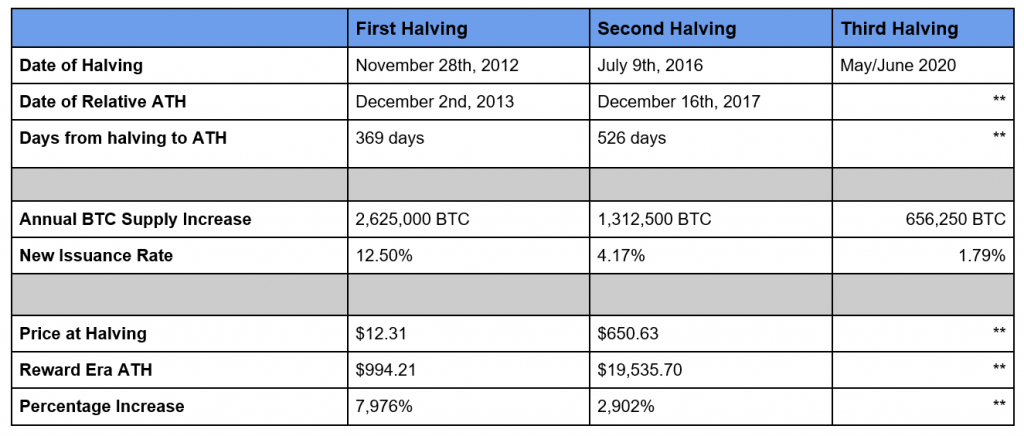Our world of cryptocurrency just keeps evolving.
Every time I write an update on crypto, I try to cover as many questions as possible and talk about what the future looks like on the horizon.
I find I’m doing this more frequently now because bitcoin is just moving at an alarming rate.
I still cannot believe that within one year — since March 2020 — the price of bitcoin has gone from a low of US$5,000 to US$55,000.
This leaves many investors with an unanswered question: Could bitcoin hit US$100,000 by the end of 2021?
Well, as I say, I was shocked with the US$50,000 leap in one year. So it leaves us open to believe that it could well reach US$100,000 per coin.
However, assets don’t just keep going up forever and ever. There comes a breaking point where it peaks, and the price plummets, and then it recovers.
So when will bitcoin hit its peak? How high will it go? What will the process look like?
Let’s see what we know and make an opinion ourselves.
What makes bitcoin so attractive?
Covid has caused great pain and disruption in the global economy.
Governments have reacted by printing money and borrowing heavily for stimulus. In the aftermath, interest rates have plunged, while the prices of assets like property and stocks have risen sharply.
This creates a real fear of hyperinflation, where prices are rising quicker than acknowledged. Cash is being devalued.
This is why bitcoin is seen by some investors as a safe haven. Its protocol is built around a concept known as block-reward halving. This preserves its value by limiting the ability to mine and create new coins.
In addition, the total maximum supply of bitcoin is 21 million. This creates extreme scarcity. This makes bitcoin a potential store of value that could be resistant to inflation.
For this reason, some people consider bitcoin to be ‘digital gold’.
How high could bitcoin go?
Eustance Huang of CNBC has written an opinion piece on the bitcoin bubble, along with a price prediction.
He believes that he is seeing a pattern. It’s similar to what’s happened within 24 months of bitcoin experiencing its block-reward halving, which happens once every four years.
This pattern has happened three times so far:
- November 2012
- July 2016
- May/June 2020

Source: Medium
I often use this graph when it comes to analysing patterns of bitcoin.
Here are the major developments:
- Within 13 months of the halving in 2012, bitcoin’s value increased by 7,976%.
- Within 24 months of the halving in 2016, the value increase by 2,902%.
- When bitcoin reached its peak of $19,535.70 in 2017, within a year, it came crashing down to around US$3,500 per coin.
- In May 2020, when the block reward was halving, the price rose to around US$9,500 per coin.
- The trajectory has been up ever since.
When could the bitcoin bubble burst?
Just by looking at past performance of block-reward halving — as well as adding Covid to the whole mix — we can make some assumptions here:
- Let’s say, within 24 months after the block-reward halving, bitcoin goes up by 1,500%.
- That’s around US$142,500 per coin.
- This will likely happen in May 2022.
- This could lead one to believe that bitcoin could reach US$100,000 by the end of 2021.
Past performance is not an indicator of future performance. However, the way that the bitcoin price has been moving, we can only speculate that the bubble could peak and burst in 2022 or even before.
How to invest in bitcoin
Many people have fears about investing in bitcoin. It is not regulated and has no central authority, unlike companies on the stock exchange.
This creates three problems:
- It is risky.
- It is speculative.
- It is volatile.
In addition, investors also require a fair bit of technical knowledge in order to buy and trade bitcoin. This acts as an additional barrier to entry.
However, there is a potential solution available that could simplify this process. It’s called a bitcoin trust. It holds the asset on the investors’ behalf, which may reduce some of the hassle and risks of buying the asset on their own.
Of course, while the trust may manage the process of buying and securely storing bitcoin, it does not reduce the volatility risk of the underlying asset. It may add custody risk, and investors may also pay a small premium for the asset management.
Are you intrigued by this method? Potentially, via global brokers, you can conveniently add units in a bitcoin trust to the speculative allocation of a portfolio. This may be useful for those seeking some exposure to this instrument.
Our Vistafolio Wealth Management Service can assist Eligible and Wholesale Clients to create a global, balanced, risk-managed portfolio.
👉 Click here to book your free Vistafolio consult today.
Regards,
Alistair Bilkey
Analyst, Wealth Morning
(Disclaimer: This material is provided for as news and general information. It should not be construed as investment advice. The opinions expressed are the personal views and experience of the author, and no recommendation is made.)
Important disclosures:
Alistair Bilkey trades Bitcoin (BTC).





Alistair is the Chief Technology Officer at Wealth Morning. An experienced developer, his responsibilities include the website, ecommerce and our WealthMail system. He is an investor and trader in his own right with a strong interest in high-growth technology businesses and cryptocurrency. He previously worked in web development and digital strategy with a leading local bank. Alistair is a shareholder of Wealth Morning.